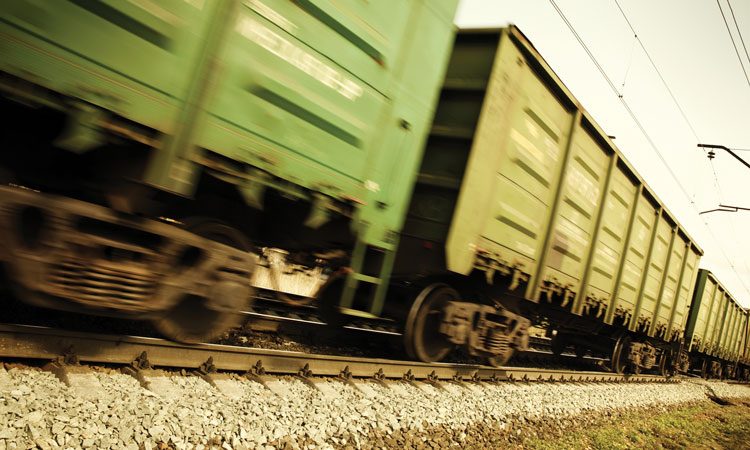Why rail noise needs to be addressed
Posted: 5 November 2016 | Marcin Wójcik (European Commission) | No comments yet
Noise is one of the most widespread causes of public health problems in the European Union and also results in significant economic costs, including health-related productivity losses. According to the World Health Organization (WHO)1 noise is, after air pollution, the second biggest source of diseases and premature deaths. The European Environment Agency estimates2 railways to be the second largest source of environmental noise in Europe, with nearly 14 million people affected. Marcin Wójcik, Policy Officer of the European Commission’s Directorate General for Mobility and Transport, covers the latest developments in the EU’s efforts to tackle this important issue.


European citizens are increasingly aware of noise pollution but to a different degree in all Member States. Recent Eurobarometer survey results show that 29% of EU citizens are often or very often disturbed by traffic noise; of these, 13% are affected by rail noise.
Among the different sources of rail noise, rail freight noise is ranked as the most significant contributor to the overall rail noise problem. This is primarily due to the fact that freight trains operate mostly during the night time, when noise disturbance is more serious. Furthermore, the most common braking technology is cast iron brake blocks, which renders train wheels rough and leads to higher levels of rolling noise. This kind of noise is a major reason for public opposition to rail transport. At the same time, rail freight traffic is expected to increase significantly in the years to come3. Rail plays an important role in ensuring sustainable mobility for people and goods in Europe, but if rail transport is to be further developed, rail noise needs to be reduced.
What has been done so far at EU level?
The Environmental Noise Directive 2002/49/EC4 requires national authorities to draw up strategic noise maps and action plans for major railways and large agglomerations. This allows the most problematic noise ‘hot spots’ to be identified and targeted. However, the Directive does not lay down binding limit values or targets instead leaving their introduction to the discretion of the Member States. Furthermore, the measures adopted by Member States are usually infrastructure-related such as noise barriers, for instance, and as a result are costly.
Railway rolling stock has been required to meet certain noise emission limits. However, this obligation, introduced through a technical specification for interoperability (TSI) on noise5, applies in principle only to newly-built rolling stock. Given the fact that the lifespan of freight wagons can be 40 years or more and the renewal rate of the total fleet is slow, on average 2-3% per year, it will take many years to reduce the current excessive noise levels, unless existing wagons are retrofitted at an earlier stage with composite brake blocks.
The replacement of cast iron brake blocks with composite brake blocks is deemed to be the most efficient way to significantly diminish the noise generated by freight wagons. These blocks can reduce noise levels by up to 10dB, which equates to halving the noise levels in terms of human perception. It is also significantly cheaper than, for example, the construction of noise barriers.
In order to speed up the progress on this issue, the Commission adopted Regulation (EU) 2015/429 harmonising Noise Differentiated Track Access Charges (NDTAC) principles across the EU. It encourages Member States to introduce a NDTAC scheme and consequently creates incentives for quicker retrofitting of wagons. The decision to introduce a scheme is left to each Member State. The only mandatory element of the scheme under the Regulation is a bonus or reduction of charges for operating more silent wagons; i.e. those that comply with TSI Noise limit values. It is also assumed that if a wagon is equipped with certified composite brake blocks then the requirements of TSI Noise are met. Infrastructure managers may introduce a bonus for railway undertakings that run silent trains or very quiet wagons and locomotives. Infrastructure managers may also introduce a malus for railway undertakings that operate noisy trains. So far, only Germany and the Netherlands have introduced NDTAC schemes. It can be reasonably expected that an increasing number of Member States will adopt such a measure in the coming years.
The cost of retrofitting has prevented railway undertakings and wagon owners from moving faster on this issue. In addition to the one-off retrofitting cost, substantial life-cycle costs related to the usage of retrofitted wagons have also been observed. To assist the sector in covering the costs and to maintain the competitiveness of the rail sector, the Commission has proposed the provision of co-funding at EU level through the Connecting Europe Facility (CEF) – the EU transport infrastructure funding mechanism6. Under the CEF 20% of the eligible costs related to retrofitting existing freight wagons with composite brake blocks can be co-funded.
Even if fully applied, the array of measures aforementioned will presumably not result in a significant reduction in railway noise within the next five to 10 years. There is also a risk that excessive levels of railway noise can lead to uncoordinated unilateral actions by some Member States. These unilateral actions could take the form of national restrictions on rail freight traffic; in particular, speed restrictions and restrictions on operating at certain times. As freight trains operate mostly at night, such measures would likely result in bottlenecks which, in turn, would have adverse effects on European economies and the railway sector.
Furthermore, the restrictions would doubtless lead to a reverse modal shift from rail to road, with associated negative impacts on the economy, environment and society. Road transport generates significantly more external costs than railway transport, including those related to congestion, noise, CO2 and other harmful emissions.
Options for the future
The Commission recently reviewed existing rail noise reduction measures for freight wagons and provided an analysis of additional possible solutions to address the issue in the future7.
The Impact Assessment preceding the review indicated the most preferable approach would be a policy mix encompassing the application of harmonised noise-charging principles (NDTAC); European and national financial support; the development of noise-related standards of railway infrastructure; and a revision of TSI Noise with a view to a potential gradual application of TSI Noise limit values to all wagons.
The Commission considers it paramount to provide the rail industry, transport authorities and other affected stakeholders with a stable timeframe that will allow them to anticipate the necessary investment and adopt a suitable market strategy. In this context the Commission has already requested the European Union Agency for Railways to begin work on the revision of the TSI Noise as soon as possible. Three task force meetings have already taken place. The task force has discussed, among others, the following issues: deadlines for the potential TSI Noise application to all existing wagons; technical solutions; monitoring of the retrofitting process; possible opt-outs and their conditions; and the roles and responsibilities of different actors. Furthermore, the information provided in the Commission’s Impact Assessment is currently being updated by the Agency to take account of recent developments.
Further to the outcome of the revised Impact Assessment and the results of the discussions with the stakeholders in the task force, the recommendations for the envisaged regulatory changes might be adjusted accordingly. For example, as not all composite brake blocks have been acoustically tested, it was proposed to determine a bench testing methodology and include it in the revised TSI Noise.
The task force prepares the ground for the activity of the so called working party to be formally established following the adoption of the delegated act being a chapeau act required for all TSIs under Article 5(1) of Recast Interoperability Directive8 scheduled for the second quarter of 2017. It is expected that on the basis of the undertakings of the working party and the ensuing Agency’s contribution, the Commission will present a draft of the TSI Noise revision to the Committee on the Interoperability and Safety of the European Rail System (RISC) in the second half of 2017.
References
- www.euro.who.int/__data/assets/pdf_file/0008/136466/e94888.pdf?ua=1
- www.eea.europa.eu/publications/noise-in-europe-2014
- EU Reference Scenario 2016 Energy, transport and GHG emissions, https://ec.europa.eu/energy/sites/ener/files/documents/20160712_Summary_Ref_scenario_MAIN_RESULTS%20(2)-web.pdf
- Directive 2002/49/EC of the European Parliament and of the Council of 25 June 2002 relating to the assessment and management of environmental noise
- TSI Noise currently in force: Commission Regulation (EU) No 1304/2014 of 26 November 2014 on the technical specification for interoperability relating to the subsystem ‘rolling stock noise’ amending Decision 2008/232/EC and repealing Decision 2011/229/EU
- Regulation (EU) No 1316/2013 of the European Parliament and of the Council of 11 December 2013 establishing the Connecting Europe Facility, amending Regulation (EU) No 913/2010 and repealing Regulations (EC) No 680/2007 and (EC) No 67/2010
- Staff Working Document (SWD) on rail freight noise reduction adopted in December 2016
- Directive (EU) 2016/797 of the European Parliament and of the Council of 11 May 2016 on the interoperability of the rail system within the European Union


Issue
Related topics
Related organisations
Directorate General for Mobility and Transport, European Commission (EC)




